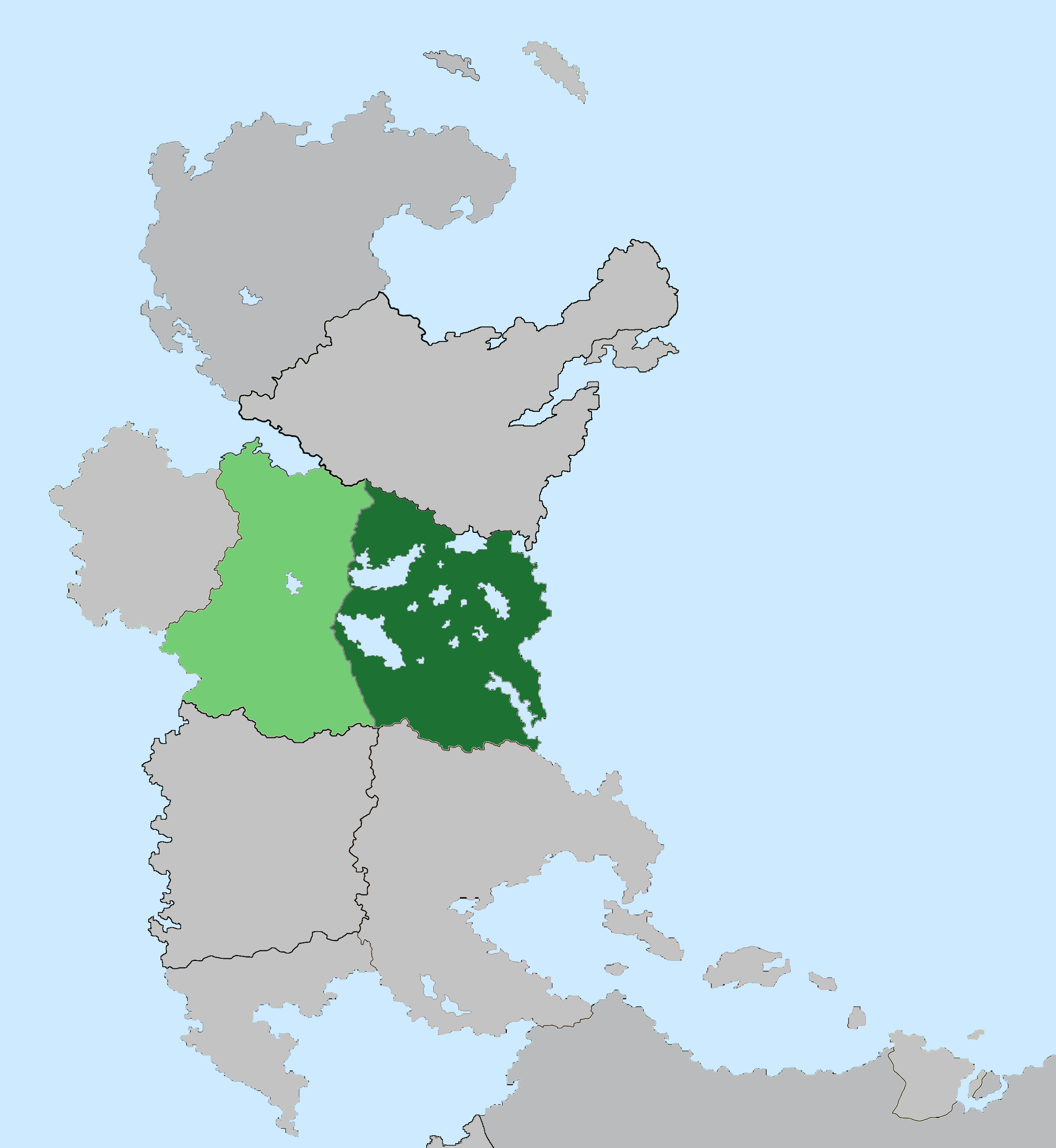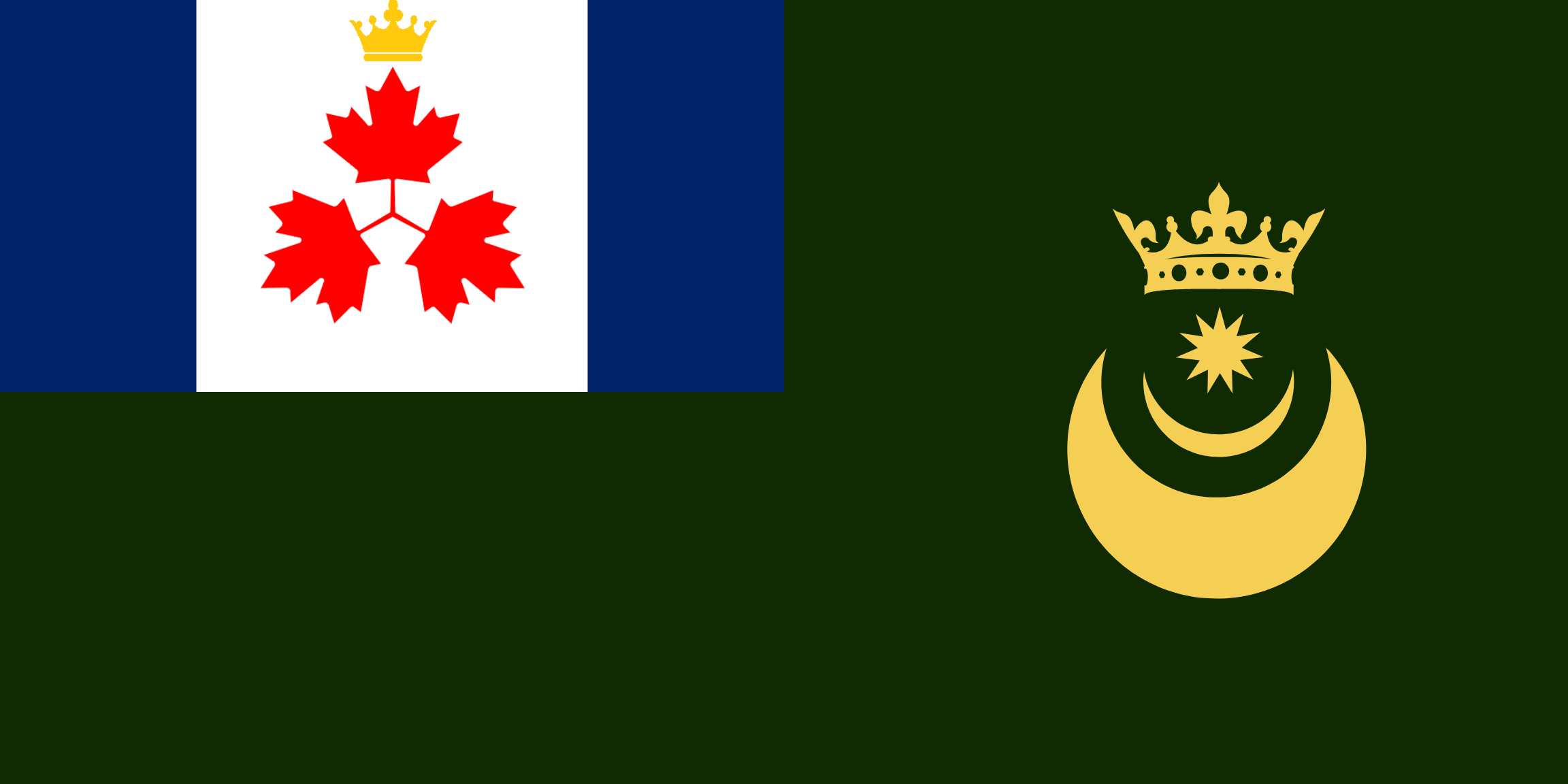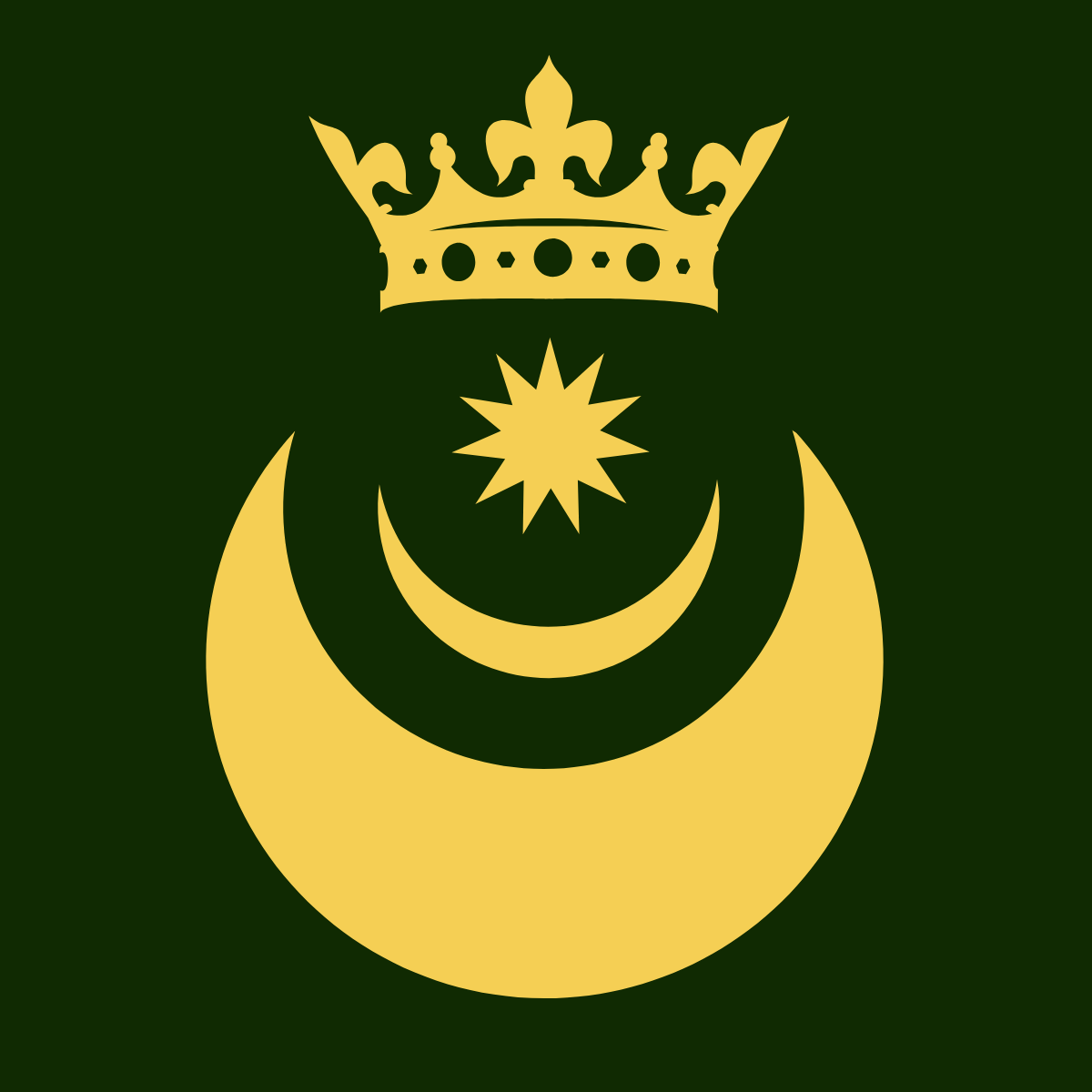East Edofasia
Dominion of Edofasia (1916–1968) Colony of Edofasia (1805–1916) Candanadian Edofasia (1783–1805) Names in Kanadiaans
Names in Edofasian
| |||||||||
|---|---|---|---|---|---|---|---|---|---|
| Anthem: "The Maple Leaves Forever" Royal anthem: "Wilhelmus von Magnare Unofficial anthem: "Edofasierlied" | |||||||||
 Location of Candanadian-ruled Edofasia in North Terra, highlighted in green. Territory in light green controlled between 1805 and 1916, territory in dark green controlled between 1783 and 1968 as East Edofasia. | |||||||||
| Status | 1783–1805: Settlements and trading posts of Candanadium 1805–1916: Colony of Candanadium 1916–1968: Self-governing dominion of Candanadium | ||||||||
| Capital | Thüle | ||||||||
| Common languages | Oseanian, Edofasian, Kanadiaans | ||||||||
| Religion | Church of Eostre in Edofasia Oseanian Faith Faith of A'ru | ||||||||
| Demonym(s) | Edofasian, East Edofasian, Candanadian | ||||||||
| Government | Self-governing colony | ||||||||
| King in Edofasia | |||||||||
• 1783–1792 | Edward I von Magnar (first) | ||||||||
• 1891–1938 | William II von Magnar (longest reigning) | ||||||||
• 1940–1968 | Herman II von Magnar (last) | ||||||||
| Governor | |||||||||
• 1783–1786 | John Lytton, 3rd Baron Lytton (first) | ||||||||
• 1966–1968 | Sir Séan Ó Riain (last) | ||||||||
| Prime Minister | |||||||||
• 1916–1919 | William Sweeny-Wainwright (first) | ||||||||
• 1964–1968 | Oisin Seoigh (last) | ||||||||
| Legislature | Crown Council for Edofasia | ||||||||
• Upper house | King's Privy Council for Edofasia | ||||||||
• Lower house | Legislative Assembly of Edofasia | ||||||||
| Historical era | Kaltach Enlightenment to True Northern Front | ||||||||
• First Kaltach contact with Terra | 1606 | ||||||||
• First permanent Oseanian settlements on the Iron Coast | 1699 | ||||||||
• Candanadian Edofasia proclaimed | 1783 | ||||||||
• Trial of the Horator | 1899 | ||||||||
• First Edofasian Crisis ends, Division of Edofasia | 1916 | ||||||||
• Siege of Tara ends | 1955 | ||||||||
• Second Edofasian Crisis begins | 1966 | ||||||||
• Magnarplatz Palace Agreement | December 1, 1967 | ||||||||
• Handover of East Edofasia | January 1, 1968 | ||||||||
| Currency | East Edofasian pound | ||||||||
| |||||||||
| Today part of | Edofasia | ||||||||
| |||||||||
This article is about the former Candanadian dominion. For the current country, see Edofasia. For the pre-1968 Confederation of Edofasia, see West Edofasia.
Formal Candanadian rule in Edofasia existed in various forms from 1783 to 1968, first as the Colony of Edofasia, then as the Dominion of Edofasia (Edofasian: Tiarnas na hÉidobhasia) after the division of Edofasia into east and west following the First Edofasian Crisis. The Dominion of Edofasia was commonly referred to as East Edofasia when distinguishing it from the independent Confederacy of Edofasia in the west, or sometimes called Loyal Edofasia in a Candanadian context.
After Kaltach peoples made contact with the inhabitants of North Terra in the 17th century, various attempts at permanent settlement on the eastern coast of modern-day Edofasia took place under private companies and colonization societies. The first state-sanctioned permanent colony of the Kingdom of Oseania, the Iron Coast Colony, established the settlements of Thüle, Edwardshaven, and Kingsport on the east coast of Edofasia in 1699. Further expansion eastward took place throughout the 18th century with the establishment of New Oseania and New Fischerstaat once the Kingdom of Fischerstaat began its own colonization efforts. When the Confederation of the Realms of the Conqueror united into the Kingdom of Candanadium, the previously Oseanian and Fischerstaat colonies were united into Candanadian Edofasia.
Ethnic discrimination against native Edofasians and other Terran peoples was commonplace and codified into law in Candanadian-ruled Edofasia by the turn of the 19th century. The Edofasian religion, the Faith of A'ru, was suppressed as it opposed policies like land ownership and the legitimacy of monarchy. Repression of the Edofasian religion also led to repression against other expressions of Edofasian identity and the emergence of a Kaltachized Edofasian class. Conflict between Candanadian authorities and Edofasian inhabitants was strongest in the west, which had been the last part of Edofasia to come under Candanadian rule. The climax of the conflict in the west came in 1913, when the nascent Edofasian nationalist movement declared the independence of the Confederacy of Edofasia. The Confederacy's rapid consolidation of power led to the Candanadian government abandoning any attempts at retaking the west in 1916, dividing the country in two along the Line of Control with East Edofasia remaining a Candanadian territory.
In an attempt to win over the Edofasian population, the Candanadian government granted a significant degree of autonomy to the East Edofasian colonial government in 1916 as the Dominion of Edofasia. This extended the franchise to the Kaltachized Edofasian class, who now had some political representation, and the abolishment of overtly ethnically discriminatory policies. Conflict with West Edofasia continued to prevail, with guerilla attacks in rural East Edofasia in the Great Lakes region, coming to a head in the 1950s as West Edofasian forces attempted to take the city of Tara by force. The ensuing siege and insurgency continued throughout the 1950s before a unilateral West Edofasian disengagement in preparation for an all-out assault in 1966, which triggered the Second Edofasian Crisis, the military collapse of East Edofasian and Candanadian forces, forcing the Candanadian government to negotiate a handover of East Edofasia and removing the True Northern Front from power in the Candanadian homeland. East Edofasia ceased to exist on January 1, 1968, unifying with West Edofasia.
History
The Trial of the Horator
Early colonial statutes had made it a criminal offence to hold the office of Horator in the Faith of A'ru, which is believed to be the continuously reincarnating spiritual leader of the Edofasian people. By 1899, anti-Candanadian sentiment was rife in the western portion of Edofasia with the formation of armed rebel groups. Candanadian authorities captured the Horator, as proclaimed by the High Priest of Scarlao, and sentenced the Horator to death for acts of treason and sedition. The public execution by hanging, which was intended as a show of force and had fallen out of fashion some centuries earlier in Kaltachia, provoked an immense public backlash and an outbreak of concentrated, intense violence against Candanadian authorities and settlers.
The First Edofasian Crisis
Historians disagree on the definition of the start of the First Edofasian Crisis. Orthodox historiography considers it to have begun with the Proclamation of the Confederacy of Edofasia in 1913 and the declaration of a state of emergency by the colonial government in Thüle, while revisionist historians argue that the Trial of the Horator and the subsequent violence against Candanadians in the west constituted the factual start of the crisis. By 1913, the Candanadian government had lost control of the western Edofasian countryside, and the newly-created Confederacy of Edofasia's forces were able to push back Candanadian security forces to the Great Lakes over the course of the next three years.
The Siege of Tara
The Tara Insurgencies
The Second Edofasian Crisis
Government and Politics
As the Colony of Edofasia
As the Dominion of Edofasia
Ethnic Discrimination
Military
Economy
Demographics
Language
Religion
Foreign Relations
The Dominion of Edofasia had some ability to pursue independent foreign relations and established representative offices in Klettastrond, Fujing, Gufufloinn, and Küstenberg. However, it was not recognized by Terran states or the Confederacy of Edofasia, and Candanadian passports issued in East Edofasia were not recognized for travel to Terran countries.


